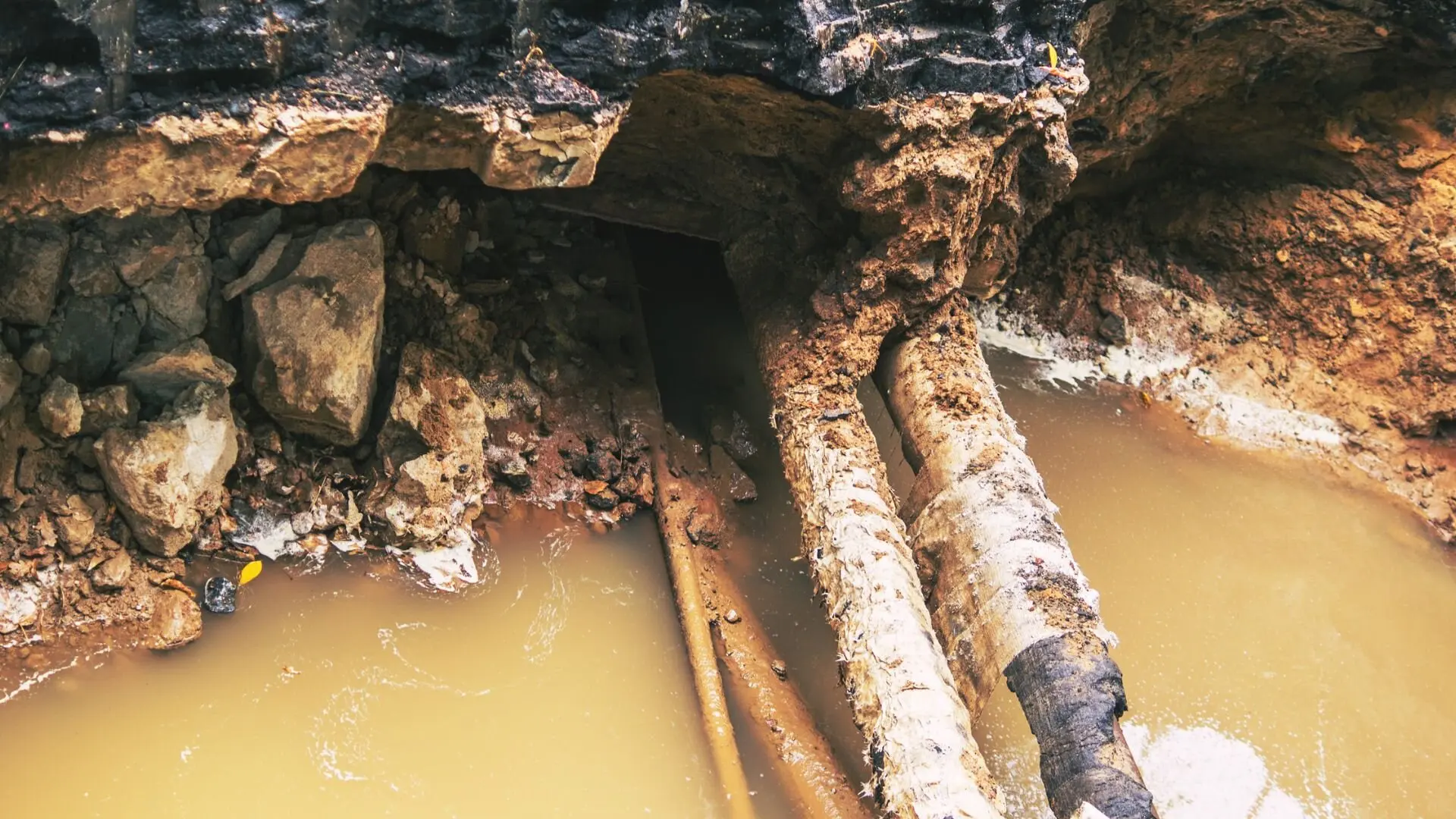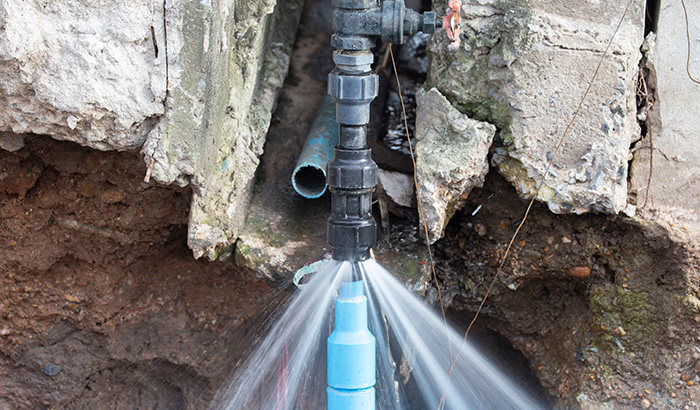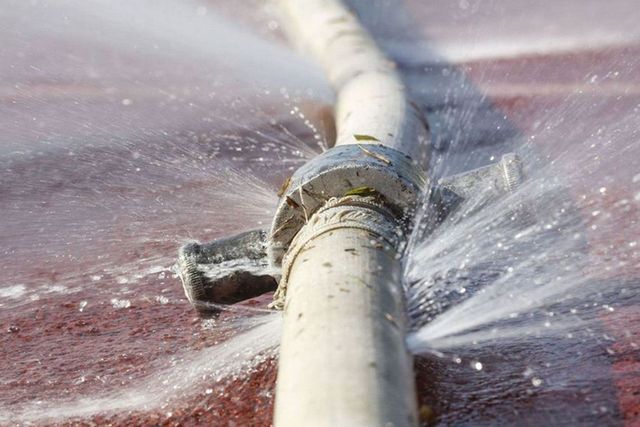Burst Pipe Insurance Claims: What You Need to Know for Water Damage Coverage
Burst Pipe Insurance Claims: What You Need to Know for Water Damage Coverage
Blog Article
Stopping Ruptured Piping: Vital Tips to Secure Your Pipes
Protecting against burst pipes is a critical problem for property owners, specifically throughout cooler months when the risk of cold is enhanced. Implementing tactical procedures such as proper insulation, routine evaluations, and keeping regular interior temperature levels can significantly lower the possibility of pipeline failure. In addition, recognizing emergency situation procedures equips home owners to respond promptly to potential plumbing issues. Nonetheless, numerous are uninformed of the particular vulnerabilities that their pipes might deal with. Checking out these vulnerabilities can provide invaluable insights into securing your plumbing system successfully.
Understand Pipe Vulnerabilities
Understanding pipeline susceptabilities is vital for effective plumbing upkeep and stopping expensive damages. Several variables add to the susceptibility of pipelines to bursts, including product make-up, age, and ecological problems. Older pipelines, especially those made from galvanized steel or polybutylene, often deteriorate with time, leading to enhanced danger of leaks and ruptures.
Temperature level variations can also dramatically influence pipe honesty. In cooler environments, water trapped in pipes can freeze, applying and increasing pressure on the pipeline wall surfaces, which may ultimately result in a ruptured. High water pressure can strain pipes, especially at bends and joints, heightening the chance of failure.

Insulate Piping Effectively
Proper insulation of pipes is important for preventing freezing and subsequent bursts during winter (burst pipe). Insulating your plumbing system effectively safeguards versus temperature level drops that can bring about costly damages. Begin by recognizing at risk locations where pipelines are revealed to outside temperatures, such as cellars, attic rooms, and outside wall surfaces
Usage foam pipe insulation sleeves or wrap insulation tape around these locations to provide a safety obstacle. Guarantee that all areas of the pipelines, particularly those with restricted heat direct exposure, get sufficient insulation. Pay unique interest to joints and fittings, as these are more prone to cold.
When insulating, it's important to select materials that satisfy local structure codes and are appropriate for the specific atmosphere. Fiberglass insulation is usually recommended for its thermal resistance residential or commercial properties. In addition, consider using warm cables or tape in severe conditions, which can be connected in to provide supplementary warm
Regularly check protected pipelines for any kind of signs of wear or damage, as compromised insulation can reduce its performance. By taking these positive steps, you significantly reduce the danger of pipeline ruptureds, guaranteeing a reputable plumbing system throughout the winter season months.
Maintain Constant Temperature
A secure indoor temperature is essential for avoiding burst pipes throughout the frigid months. When temperatures decline, water within pipelines can ice up, broadening and developing pressure that might eventually trigger the pipelines to ruptured.Using a programmable thermostat can aid manage indoor temperature levels properly, guaranteeing that spaces with pipes continue to be cozy also when the residence is unoccupied.
Furthermore, it is prudent to enable faucets to leak somewhat throughout severe cold snaps. This minor circulation of water can protect against cold by click here for info alleviating pressure within the pipelines. Additionally, during especially serious weather condition events, think about temporarily putting on hold any kind of nighttime troubles on your thermostat to maintain a stable cozy atmosphere. By applying these approaches, homeowners can considerably reduce the threat of pipeline bursts and secure their pipes systems against the severe winter elements.
On A Regular Basis Evaluate Pipes
Regular evaluations of plumbing systems are vital for preventing burst pipes and keeping overall home integrity. During these inspections, it is necessary to examine visible pipelines for signs of rust, leaks, or wear.
In addition, examining joints and connections is essential, as these points are often at risk to leaks. House owners must additionally examine water pressure levels, as excessive pressure can strain the plumbing system and raise the risk of pipeline ruptureds.
Take into consideration organizing specialist pipes inspections at the very least once a year, specifically before winter season, to guarantee your system is prepared for cooler temperatures. By being aggressive in your method, you can protect your home against the pricey and disruptive repercussions of burst pipelines.
Know Emergency Procedures
Comprehending emergency situation treatments is vital for every single homeowner, particularly after conducting routine plumbing inspections. Being gotten ready for a pipes emergency can substantially Web Site alleviate damage visit our website and conserve expenses. First, locate your primary water shut-off shutoff; it is commonly found near the water meter or where the primary line enters your home. Acquaint on your own with its operation, as shutting off the water supply swiftly can stop substantial flooding.
Following, maintain necessary tools handy. A pipes emergency situation set need to consist of a wrench, bettor, and towels, as well as a flashlight and a bucket for tiny leakages. Additionally, consider having the contact information for a trusted plumber conveniently available, must the situation intensify past your control.
If you find a leak or burst pipeline, immediately turn off the water and inform your plumbing professional. Furthermore, record the damage with photos for insurance policy purposes. burst pipe. Be aware of the indicators of prospective pipes problems, such as uncommon water stress fluctuations or damp spots on walls
Ultimately, proactive expertise and quick action are critical in handling plumbing emergency situations, guaranteeing your home continues to be secured and decreasing prospective damages.

Verdict
In final thought, protecting against burst pipes necessitates a diverse method that consists of understanding pipe vulnerabilities, correct insulation, keeping regular indoor temperature levels, normal examinations, and knowledge of emergency situation procedures. By implementing these important techniques, the danger of plumbing failures can be significantly lowered, thereby ensuring the long life and performance of the pipes system. Aggressive procedures not just safeguard versus prospective damages yet additionally add to overall water preservation and the defense of home.
In cooler climates, water caught in pipelines can freeze, putting in and broadening pressure on the pipe walls, which might inevitably lead to a ruptured. When temperatures decline, water within pipes can freeze, increasing and creating stress that might eventually create the pipelines to ruptured. By implementing these approaches, homeowners can substantially lower the threat of pipeline ruptureds and safeguard their pipes systems versus the harsh winter months components.

Report this page